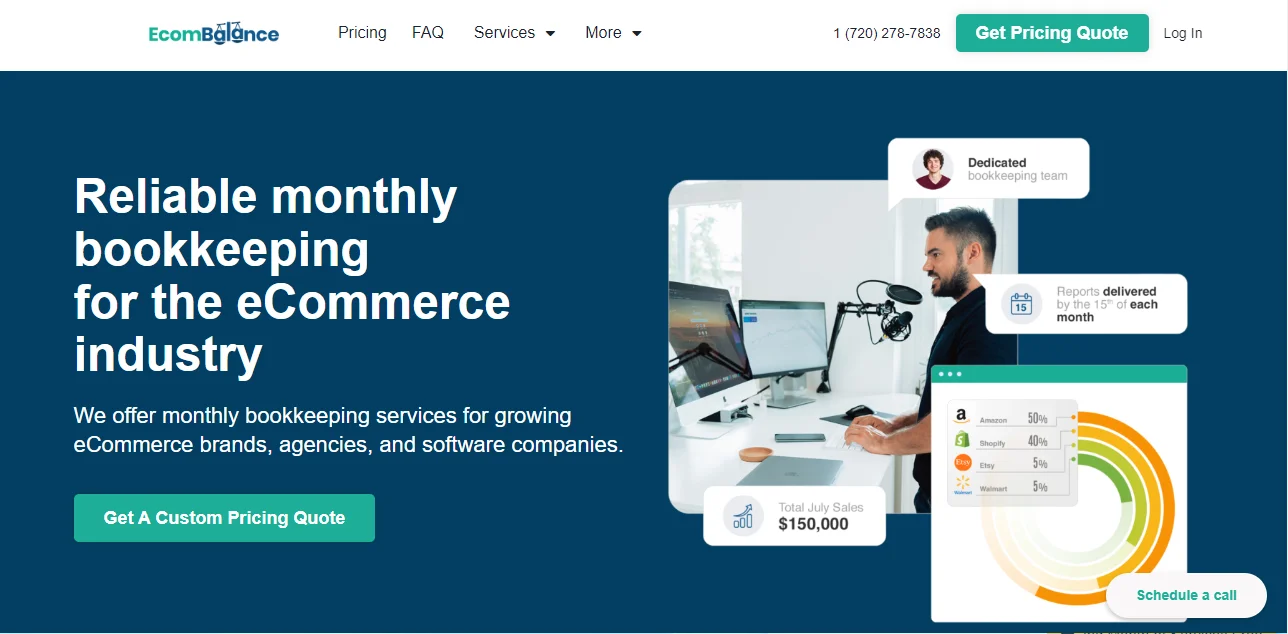
In today’s digital marketplace, small e-commerce brands have more opportunities than ever to reach customers beyond their local borders. With the right strategies, even modest online retailers can compete on a global scale and attract international shoppers seeking unique products and personalized service.
However, expanding globally requires more than just translating a website. It involves smart marketing, knowledge about regional preferences, and optimizing logistics. With a thoughtful approach, from tailoring online storefronts to leveraging cross-border shipping solutions, every task is within reach for even the smallest brands.
In this article, we will explore practical steps that small e-commerce businesses can take to grow their global presence.
Optimize Your Website for International Buyers
Optimizing e-commerce websites for international buyers is key to creating a seamless global shopping experience. A localized site builds trust and increases conversion rates. Additionally, make your site mobile-friendly and fast-loading, as performance impacts user experience across different regions and devices.
Statista reported that the standout trend in e-commerce is the dominant use of mobile devices. Smartphones were used for 80% of all retail website visits globally and drove the majority of traffic, outpacing desktops and tablets. As mobile adoption continues to accelerate, optimizing for mobile has become essential for reaching today’s digital shoppers.
Start by offering multiple language options, like displaying prices in local currencies, and ensuring your checkout process supports international addresses. Once buyers in any corner of the world become comfortable with your website, you can expect orders to come pouring in.
Understand International Market Preferences
You don’t expect customers from across the globe to have similar needs and expectations. Cultural norms, shopping preferences, and budgets vary across the globe. Therefore, a one-size-fits-all selling strategy won’t work for e-commerce sellers targeting global expansion.
You need to ensure that your selling strategies match the target audience in different parts of the world. Understanding international market preferences helps small e-commerce brands tailor products, messages, and promotions to fit cultural expectations and buying behaviors.
According to Forbes, international purchasing has become routine for many shoppers. Around 52% of online consumers worldwide purchase from both local and international websites. A strategy that succeeds in one country might fall flat in another.
By researching local trends, seasonal demands, and popular platforms, businesses can better connect with global audiences, improve engagement, and boost sales. Personalizing your approach by region shows respect and enhances customer trust.
Build Scalable Logistics and Shipping Solutions
Efficient logistics and reliable shipping are crucial for satisfying international customers and scaling operations smoothly. Partnering with global carriers, active shipping software, and clear delivery timelines can reduce delays and boost buyer confidence.
Flexible fulfillment options, like local warehouses or third-party logistics (3PL), also help manage growing demand while keeping costs manageable.
According to the Global Trade Magazine, the third-party logistics (3PL) model dominates the market with a 76% share. More e-commerce companies are turning to 3PL providers to streamline operations, reduce costs, and scale efficiently. This outsourcing approach allows businesses to concentrate on their core strengths, such as product development, marketing, and customer experience.

Strengthen Business Knowledge to Support Growth
As your e-commerce brand expands globally, strategic decisions around operations, leadership, and market entry become increasingly complex. To stay ahead, it’s essential to strengthen your business knowledge through continuous learning.
Founders and senior managers must be equipped with the tools and knowledge to confidently handle global market dynamics and cross-border challenges. If they have advanced education, such as a Doctor of Business Administration, they have a better understanding of leadership.
Fortunately, with the convenience of online learning, even busy entrepreneurs can now pursue advanced business education without pausing their ventures. Programs like online Doctor of Business Administration programs equip leaders with the skills needed for data-driven decisions, cross-border strategy, and executive-level thinking. This makes them more prepared to meet global challenges head-on.
Whether your goal is to sharpen your leadership skills or explore the role of technology, these online programs are quite helpful, suggests Marymount University. These programs offer a powerful combination of theory and real-world application and prepare you to lead with vision, clarity, and insight.
Offer Multilingual Customer Support
Language plays a vital role in building trust, resolving issues efficiently, and encouraging repeat business. A shopper who feels understood is far more likely to complete a purchase and return again.
According to Language I/O, 75% of consumers are more likely to repurchase from brands offering support in their native language. Even more striking, 40% of consumers refuse to purchase from sites that don’t offer language options. That’s nearly half of your potential customer base lost due to a preventable gap in communication.
Providing multilingual support doesn’t always mean hiring a massive international team. Many small brands use a mix of tools like AI-driven chatbots, translated FAQs, and region-specific contact agents to serve customers in their preferred languages. Even email templates or automated replies in local languages can create a smoother post-purchase experience.
Multilingual support helps reduce misunderstandings, increases customer satisfaction, and signals that your brand respects and values global audiences.

Adapt Payment Options to Local Preferences
One of the biggest mistakes small e-commerce brands make when going global is assuming that payment behaviors are the same everywhere. In reality, payment preferences vary widely from country to country, and offering the wrong options can lead to abandoned carts and lost revenue.
For example, while U.S. shoppers are comfortable using credit cards or PayPal, customers in the Netherlands prefer iDEAL bank transfers. In Japan, convenience store payments remain common, and in India, UPI (Unified Payments Interface) has become a go-to digital method. Shoppers in China expect Alipay or WeChat Pay, while German consumers often trust direct bank transfers over credit cards.
Real-time payment (RTP) systems are also gaining ground globally, driven by speed and convenience. From India’s UPI and Brazil’s Pix to Thailand’s PromptPay and Australia’s NPP, these systems are redefining how people pay. UPI and Pix alone saw explosive growth in 2023, with usage rising by 45% and 78%, respectively.
By adapting your checkout process to include region-specific payment gateways, you not only boost trust but also make shopping seamless for international customers. It’s a small investment that can significantly improve conversions and customer loyalty worldwide.
Use Global-Friendly Marketing Channels
To reach international customers effectively, small e-commerce brands must embrace global-friendly marketing channels. Social media platforms like Instagram, TikTok, and Facebook offer broad reach, while search engines like Google and Baidu allow for targeted ads.
Email marketing remains powerful when tailored to local languages and preferences. Collaborating with international influencers or using marketplaces like Amazon and Etsy can also build visibility. Adapting content for cultural relevance ensures your message resonates across diverse audiences.
Prioritize Trust and Compliance
A trustworthy reputation not only encourages purchases but also builds long-term loyalty in diverse global markets. Gaining international customers’ trust starts with transparency and compliance.
A new study by Juniper Research highlights a sharp rise in e-Commerce fraud. The report projects that fraud losses will grow from $44.3 billion in 2024 to $107 billion by 2029. This marks a staggering 141% increase over five years. The findings underscore the urgent need for stronger fraud prevention strategies in the digital commerce space.
Display clear return policies, secure payment methods, and recognizable trust badges to reassure buyers. Adhering to international regulations like GDPR for data privacy or country-specific customs rules shows your brand’s professionalism and commitment to ethical practices.
Leverage Social Proof from Global Customers
When entering international markets, shoppers want reassurance that your brand is trustworthy, especially if it’s unfamiliar to them. Highlighting reviews, testimonials, and user-generated content from global customers builds instant credibility. A happy customer in Singapore, Germany, or Brazil sharing their experience can influence others in that region to give your store a chance.
Displaying translated reviews or featuring diverse customer photos on product pages and social media shows that your brand is already serving international buyers. This kind of social proof helps break down hesitation and fosters trust across cultures.
What Is EcomBalance?

EcomBalance is a monthly bookkeeping service specialized for eCommerce companies selling on Amazon, Shopify, eBay, Etsy, WooCommerce, & other eCommerce channels.
We take monthly bookkeeping off your plate and deliver you your financial statements by the 15th or 20th of each month.
You’ll have your Profit and Loss Statement, Balance Sheet, and Cash Flow Statement ready for analysis each month so you and your business partners can make better business decisions.
Interested in learning more? Schedule a call with our CEO, Nathan Hirsch.
And here’s some free resources:
- Monthly Finance Meeting Agenda
- 9 Steps to Master Your Ecommerce Bookkeeping Checklist
- The Ultimate Guide on Finding an Ecommerce Virtual Bookkeeping Service
- What Is a Profit and Loss Statement?
- How to Read & Interpret a Cash Flow Statement
- How to Read a Balance Sheet & Truly Understand It
Frequently Asked Questions (FAQs)
Are global ads different from local ones?
Yes, global ads often differ from local ones because they must appeal to broader, culturally diverse audiences. While local ads can focus on regional trends and languages, global ads require a more universal tone and adaptable visuals. Tailoring messaging for specific markets boosts relevance and campaign success.
What tools help with cross-border e-commerce?
Tools like Shopify Markets, Stripe, and Payoneer streamline cross-border e-commerce by managing currencies, payments, and taxes. Platforms such as Google Translate and Weglot help localize websites. Shipping tools like ShipStation or Easyship simplify international logistics, while analytics platforms track global customer behavior for smarter decision-making.
Do I need to register my business in every country I sell to?
No, you don’t need to register your business in every country you sell to, especially for occasional sales. However, some countries may require tax registration once you surpass a sales threshold. It’s important to understand local regulations, VAT or GST rules, and consult legal experts for compliance.
Charting a Global Path for E-Commerce Success
Expanding your small e-commerce brand globally is more achievable than ever with the right mix of strategy, tools, and knowledge. By focusing on localization, scalable logistics, and global-friendly marketing, you can connect with customers worldwide.
Continuous learning and strong compliance practices will support sustainable growth. With thoughtful planning, your brand can thrive on the global stage and turn international interest into lasting success.




